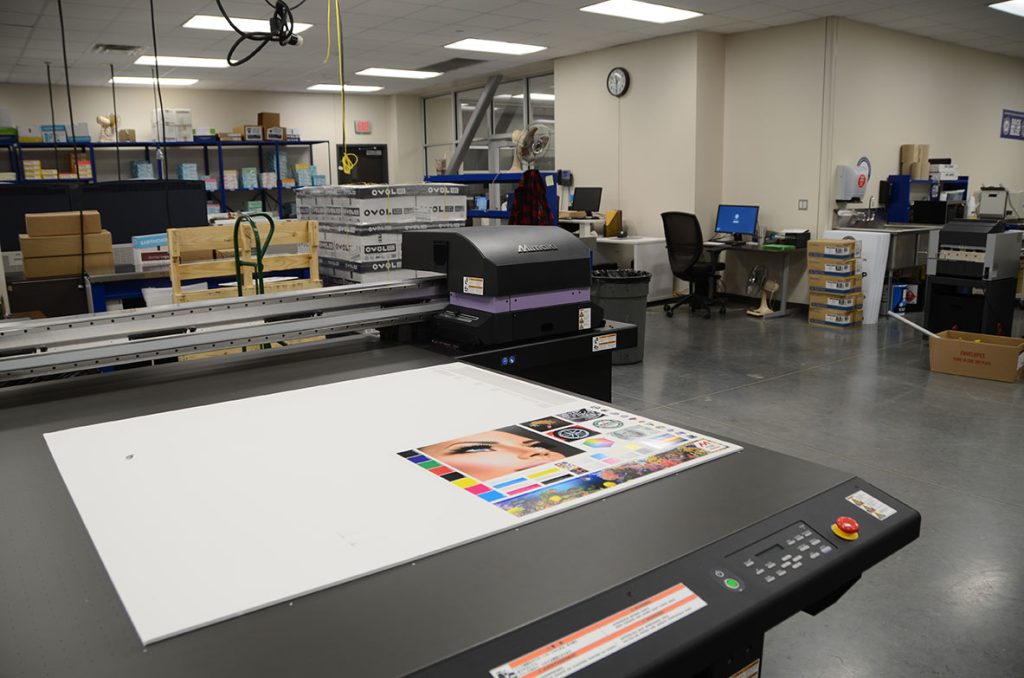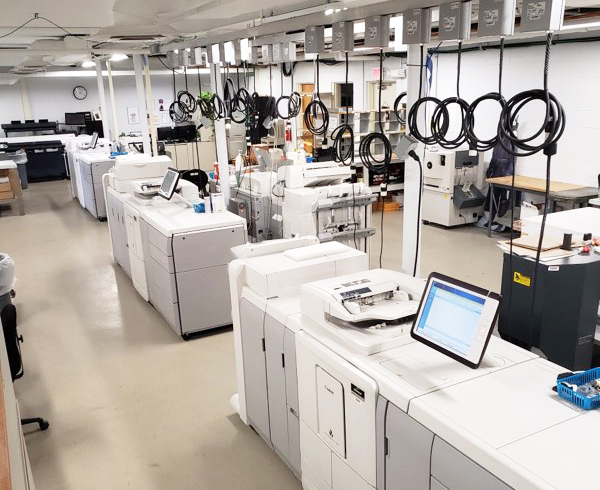Why Every Art Collector Should Know a Print Shop Near Me
Why Every Art Collector Should Know a Print Shop Near Me
Blog Article
The Ultimate Guide to Using Printing Services for Custom Art Prints
Steering via the world of customized art prints calls for a clear understanding of different printing services. Artists must consider elements such as printing techniques and products to accomplish the desired result. Each decision, from art work preparation to shade calibration, plays an important function in the end product. As they explore these aspects, musicians can expose the possibility for their work to get in touch with audiences in a purposeful means. What actions can they take to ensure their prints stand out?
Recognizing Various Sorts Of Printing Solutions
Numerous individuals might forget the intricacies of printing services, understanding the various types offered is important for any person looking to create personalized art prints. The most typical kinds consist of electronic printing, balance out printing, and display printing. Digital printing is favored for its quick turnaround and capability to generate top quality images straight from digital files, making it optimal for tiny runs. In comparison, balanced out printing deals premium photo high quality and is cost-effective for bigger quantities, using plates to move ink onto paper. Display printing, usually used for textiles and marketing products, entails pushing ink via a mesh display, allowing for lively colors and textures. Each approach has its one-of-a-kind advantages and restrictions, making it important for artists and designers to assess their particular needs, such as quantity, desired top quality, and budget, prior to selecting a printing service that straightens with their imaginative vision.
Selecting the Right Products for Your Prints
Selecting the proper materials is important for attaining premium customized art prints. Recognizing the various kinds of paper and the significance of ink quality can considerably impact the result. Artists must take into consideration these aspects to guarantee their vision is properly represented in the printed piece.
Paper Types Explained
Picking the appropriate paper kind is crucial for accomplishing the preferred aesthetic and toughness in custom art prints. Various options exist, each offering distinctive features. Shiny paper improves color vibrancy and information, making it optimal for photography prints. Alternatively, matte paper provides a softer surface, which is more suitable for art work that requires nuance and appearance. Great art paper, often made from cotton or alpha cellulose, uses archival top quality and is ideal for replicating complex information in paintings (Print Shop Near Me). Additionally, specialized documents, such as watercolor or canvas, can include distinct visual impacts. Eventually, choosing the ideal paper kind will substantially influence the last discussion, making certain that the art work is both aesthetically enticing and resilient
Ink Quality Matters
Ink high quality plays a necessary duty in the general success of custom-made art prints. Top quality inks guarantee lively colors, sharp information, and long life, which are crucial for showcasing artistic job. When choosing printing services, artists should take into consideration pigment-based inks over dye-based options, as they provide better fade resistance and shade stability. Additionally, the option of ink ought to complement the chosen paper type, boosting the print's aesthetic effect. Ecological factors, such as moisture and temperature, can additionally affect ink efficiency; consequently, artists should make inquiries concerning ink formulas that stand up to these components. Eventually, investing in superior ink top quality can boost the end product, ensuring that the art print holds to the musician's vision for many years to come.
Discovering Printing Strategies: Digital vs. Conventional
While both digital and traditional printing methods have their special advantages, the decision on which approach to use usually depends upon the particular needs of the art work. Digital printing stands out in convenience and rate, enabling quick turnaround times and the ability to print as needed. This method is especially beneficial for musicians that call for small runs or unique items, as it gets rid of the need for considerable setup processes.Conversely, conventional printing strategies, such as lithography and screen printing, frequently produce richer structures and shades, attracting artists looking for an extra genuine and tactile surface. These methods can enhance the deepness and high quality of the artwork, making them ideal for larger editions. Furthermore, typical approaches might supply an unique visual that digital printing in some cases struggles to reproduce. Inevitably, the option between these strategies must take into consideration elements like wanted top quality, amount, and artistic intent, leading artists to one of the most suitable choice for their jobs.

Preparing Your Artwork for Printing
Effectively preparing artwork for printing needs careful focus to detail, regardless of the chosen printing method. Artists should guarantee that their files are developed at the suitable resolution, typically 300 DPI, to maintain intensity and clearness. The correct color mode, usually CMYK for print, is important to accomplish the desired color precision. Musicians should likewise take into consideration the dimensions of the art work, making certain to consist navigate to this website of bleed areas if essential, to prevent any kind of undesirable white edges after trimming.Additionally, documents layouts play an essential function; TIFF and PDF are frequently liked for premium prints. Before entry, it is essential to assess the artwork for any flaws or undesirable aspects. By meticulously examining these aspects, artists can enhance the probability of their prints aligning with their innovative vision, inevitably bring about a successful printing result.
The Value of Shade Calibration and Proofing
Shade calibration and proofing are essential actions in the printing procedure, as they assure that the last outcome accurately reflects the musician's vision. Appropriate color calibration warranties that the shades showed on the display suit those that will be printed. This procedure includes adjusting the monitor setups, printer accounts, and inks to achieve a constant color representation.Additionally, proofing permits artists to sneak peek their work prior to the final print run. This phase allows them to spot and fix any discrepancies in detail, saturation, or shade, therefore lessening expensive errors. By making use of hard-copy or digital proofs, artists can make informed decisions about changes needed for optimal results.Incorporating shade calibration and proofing into the printing workflow not just improves the top quality of the final item however additionally promotes a reputable collaboration between the musician and the printing service, assuring satisfaction and fidelity to the original artwork.
Picking the Perfect Dimension and Format for Your Prints

Marketing and Marketing Your Custom Art Prints
Advertising and marketing and offering customized art prints calls for a strong brand name identity to stand apart in an affordable market. Effective online promo strategies and the strategic use social media systems can significantly boost presence and engagement. By incorporating these components, musicians can create an engaging visibility that brings in prospective purchasers.
Building Your Brand Identification
Developing a strong brand identification is vital for musicians seeking to effectively market and market their custom art prints. This identification incorporates the artist's distinct design, values, and tale, which resonate with prospective buyers. Artists should produce a natural aesthetic existence throughout all systems, including logo designs, color pattern, and typography that mirror their creative vision. In addition, a clear goal statement aids connect the musician's objective and enthusiasm. Engaging narration regarding the ideas behind each item can cultivate emotional links with the audience. Consistency in messaging, whether on social media or packaging, enhances acknowledgment and trust. By carefully curating their brand identity, musicians can distinguish themselves in an open market, bring in faithful consumers that appreciate their creativity.
Reliable Online Promotion Techniques
What approaches can musicians utilize to properly advertise their customized art publishes online? Creating a professional website showcasing the artwork is important. This website should include premium photos and thorough summaries to involve possible customers. Additionally, artists can utilize email marketing by building a client list to share updates, promotions, and brand-new releases. Teaming up with blog writers and influencers in the art community can increase reach and reliability. Offering exclusive pieces or limited-time discounts can additionally create seriousness, motivating acquisitions. Furthermore, maximizing web content for internet search engine through appropriate search phrases will enhance visibility. Maintaining a blog site concerning the artistic process can bring in art enthusiasts, fostering a much deeper link with the target market and boosting the overall advertising and marketing approach.
Making Use Of Social Network Platforms
Social media systems function as effective devices for musicians wanting to market and market their custom art prints. By leveraging platforms like Instagram, Facebook, and Pinterest, musicians can showcase their work to a substantial target market. Engaging visuals and tactical hashtags can raise presence, attracting prospective buyers to their accounts. Routinely publishing web content, such as behind-the-scenes procedures or new styles, helps maintain target market passion and promotes a feeling of area. Additionally, musicians can use targeted advertising to reach specific demographics, improving the chances of sales. Collaborations with influencers or other musicians can better magnify direct exposure. Eventually, a well-curated social networks visibility not only promotes customized art prints but also develops a dedicated customer base in time.
Frequently Asked Concerns

Just how Do I Discover Reputable Printing Solution Providers?
To discover trustworthy printing provider, one need to investigate on the internet reviews, look for referrals from peers, compare profiles, request samples, and evaluate customer support responsiveness. This complete technique warranties informed choices and adequate outcomes.
What Is the Typical Turn-around Time for Custom Prints?
The normal turnaround time for custom-made prints basics differs by supplier, however typically varies from a couple of days to 2 weeks. Variables affecting this consist of order dimension, intricacy, and the particular printing methods utilized.
Can I Obtain a Refund if I'm Not Pleased With My Prints?
The concern of getting a reimbursement for unacceptable prints commonly relies on the particular printing service's plans. Lots of business supply satisfaction assurances, while others may have rigorous return conditions, emphasizing the relevance of examining terms ahead of time.
Are There Any Hidden Expenses Related To Printing Solutions?
Lots of printing solutions may include concealed costs such as arrangement fees, shipping fees, or additional costs for specific materials. It's vital for customers to ask concerning all possible costs prior to finalizing their order.
Just How Can I Guarantee My Prints Are Environmentally Pleasant?
To assure prints are eco-friendly, one need to choose environment-friendly inks, recycled paper, and sustainable printing practices. Investigating printing solutions that prioritize sustainability and getting accreditations can further guarantee very little environmental effect in the printing procedure. Guiding through the globe of personalized art prints calls for a clear understanding of different printing services. Lots of people may neglect the complexities of printing solutions, comprehending the various kinds offered is necessary for any person looking to produce custom-made art prints. The most common types include digital printing, counter printing, and display printing. Effectively preparing art work for printing needs mindful focus to information, regardless of the chosen printing method. Prints intended at galleries could require common sizes to help with framing, whereas distinct styles might appeal to enthusiasts looking for something distinctive.Lastly, the printing service's capabilities have to be evaluated.
Report this page